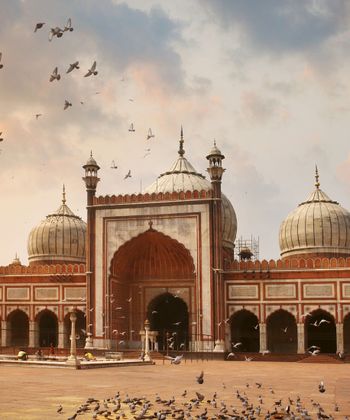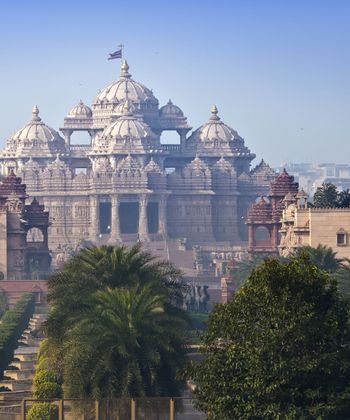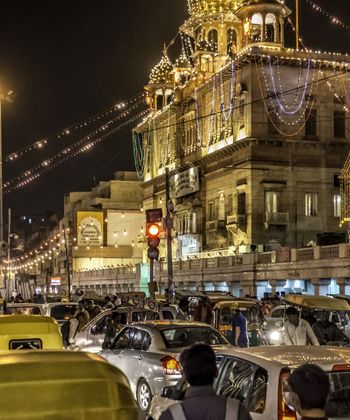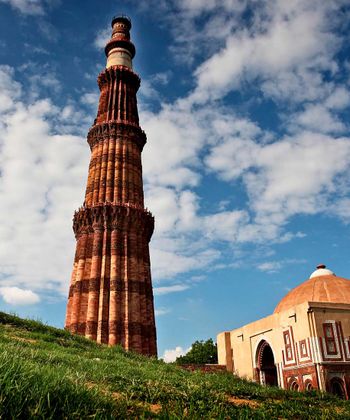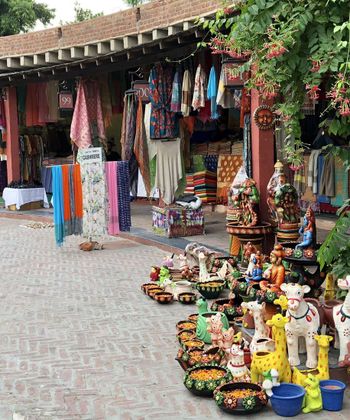Akshardham Temple
A striking silhouette found in New Delhi belongs to the Akshardham Temple. As an offering to God as a home, this landmark beckons visitors and believers to enjoy their spiritual sides. Naturally, this modern marvel is a bucket list item that shouldn't be missed. Learn all about this intricately carved monument to Indian Hinduism right now.
Building the Marvel
Although the Akshardham Temple looks hundreds of years old, it was actually built between 2000 and 2005. With efforts to secure the land and blessing it since the mid-1900s, the temple's completion in 2005 was a cultural celebration. Indeed, countless numbers of volunteers gave their time to carve and build this monument.
Remarkably, more than 10,000 artisans offered their expertise to carve out the stone. Because the structure cannot have any ferrous metal, working carefully with the stone was imperative for a sturdy structure.
Exploring the Mandovar
Walking up to the monument is a lesson in Hinduism. For example, the exterior facade is called the Mandovar. Here, each row offers a celebration of everyday beings, plant life and Hinduism's entities. At 25 feet tall, every carving has an intricate design and personality.
Walk around the entire Mandovar because it stretches for more than 600 feet. Indeed, it's not unusual to see more visitors gazing at the Mandovar than there are entering the interior at times.
Entering the Temple
As you enter through the Mandir's front entrance, it's fascinating to note that this monument has 10 gates. As seen in Vedic literature, these gates represent pathways to art, religion and more. Inside, you'll discover even more carvings, pillars and archways supporting the structure. High above, highly detailed domes cap the temple while protecting the wide-open spaces.
Within the inner sanctum, a wondrous group of statues looks over the visitors. Followers know Bhagwan Swaminarayan as the focal point along with nearby gurus who support this God incarnate. With their breathtaking details, these statues are a highlight of the entire complex.
Walking the Grounds
If you're interested in worshiping at the temple, make your way outside to the Parikrama or circumambulatory pathway. Here, you can walk clockwise around the complex. For Hindus, this walk around the temple is a way to visualize their God as the center of their lives.
In addition, the complex includes a lotus garden for further relaxation and reflection. Explore this area with care because it has many stones reflecting famous quotes from admirable people. Because of its distinct shape, the lotus garden is an achievement in design and construction styles.
Recognizing the Elephant and Cow Symbolism
At the temple's base is the grand foundation carved into numerous elephants. Also referred to as the Elephant Plinth, this base reminds visitors that Hinduism and India itself are based on strong beliefs and adoring believers. In addition, the complex uses the bovine or cow as another animal representation for longstanding religious beliefs. Found along the temple lake's edge, these cows reflect the personalities of 108 Hindu gods.
Knowing the Appropriate Etiquette
The temple is open to every visitor from around the globe, but understanding traditional etiquette is paramount. First, wear modest clothing that covers the torso, upper arms and upper legs. For your convenience, the temple offers a free sarong to wear within the complex if your clothing doesn't fit the dress code. Simply return it after use.
Second, remove your shoes and deposit them in the appropriate receptacle when you enter the Mandir. Because the Mandir is sacred, respecting the interior with no shoes and hushed tones is required. Certainly, praying is encouraged throughout your visit inside the Mandir.
Timing Your Temple Visit
The complex is open at 10 a.m. and closes around 8 p.m. from Tuesday through Sunday. Enjoy the grounds during the day, and gather near the water show as the sun sets. Set to a sublime soundtrack, this water show uses lasers, lights, water dance and many other effects to tell a timeless story.
Spending a day at the Akshardham Temple gives you a chance to spend time meditating, discovering and appreciating this modern marvel. Regardless of your background, learning more about the Indian culture improves everyone's experiences. In the end, this mesmerizing landmark draws in visitors from across the globe every year.

